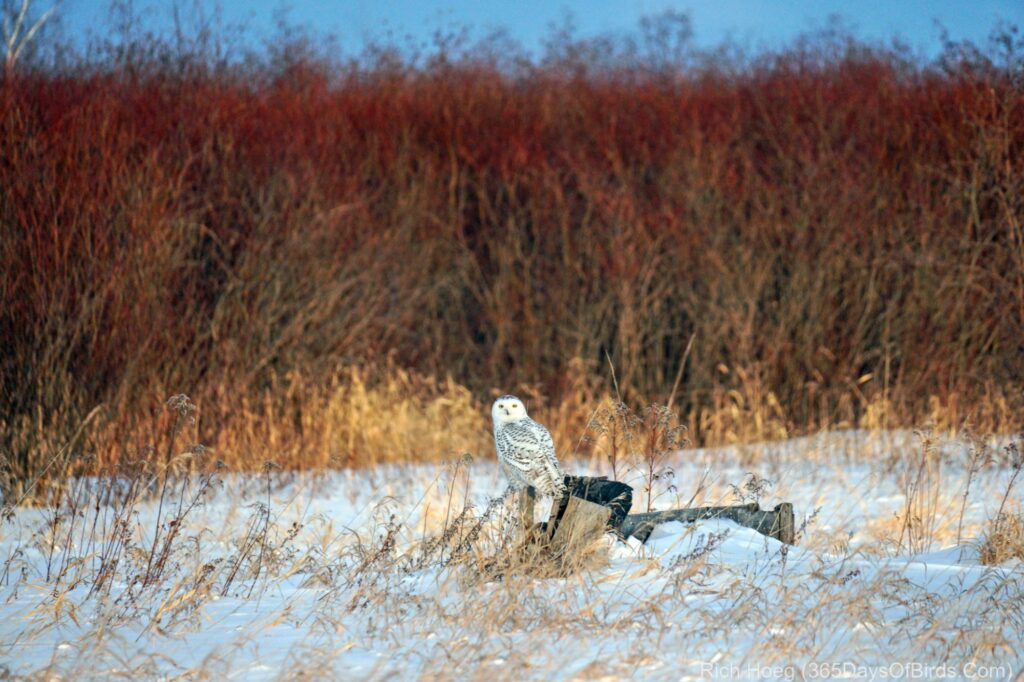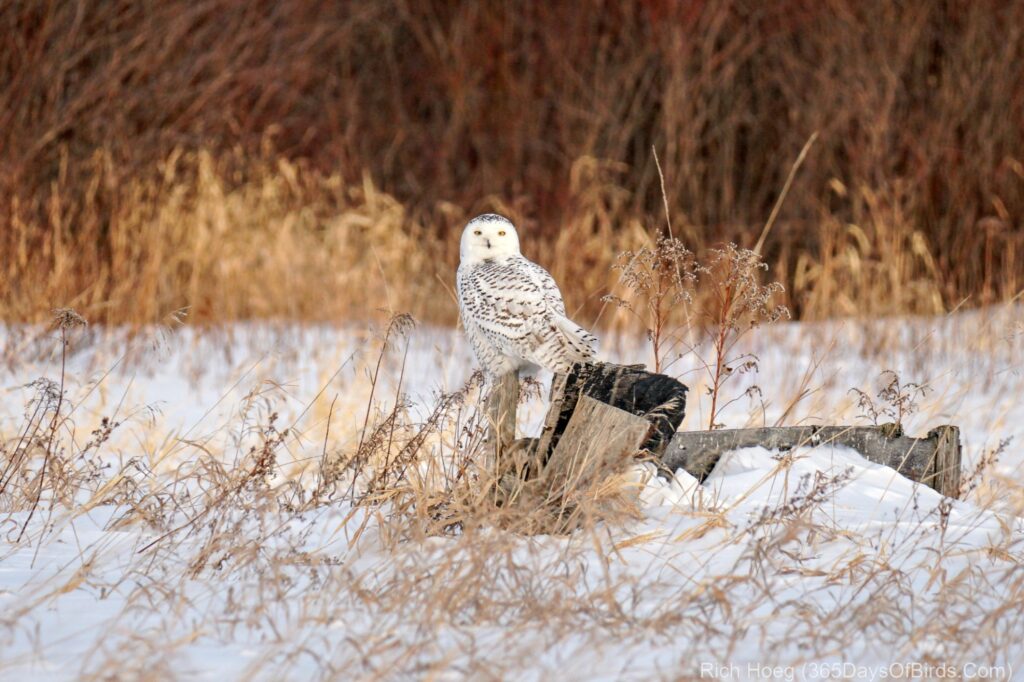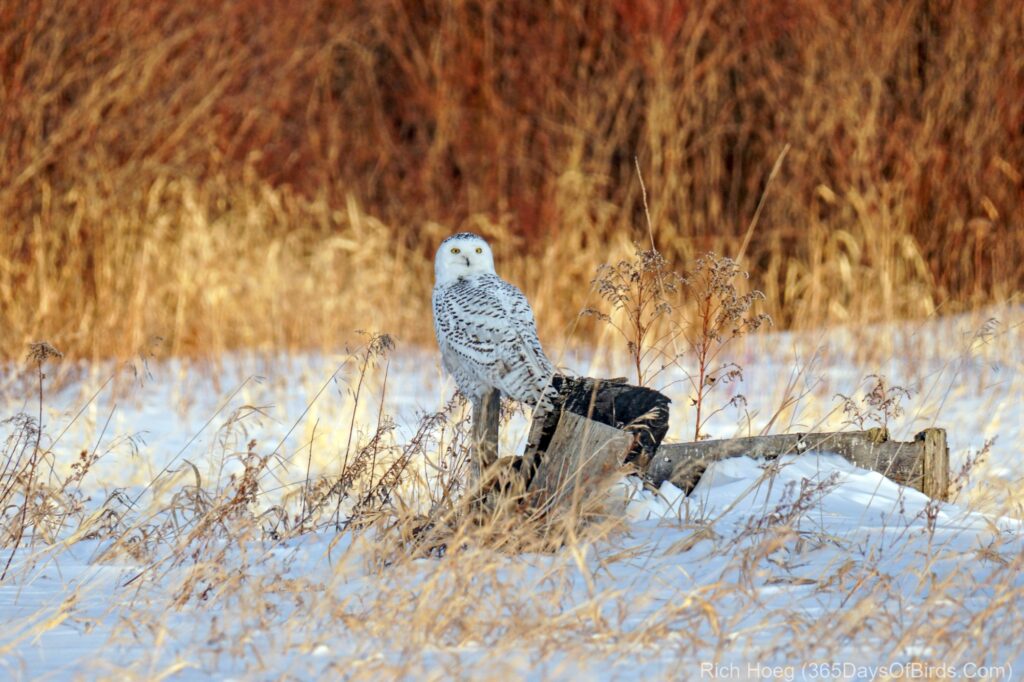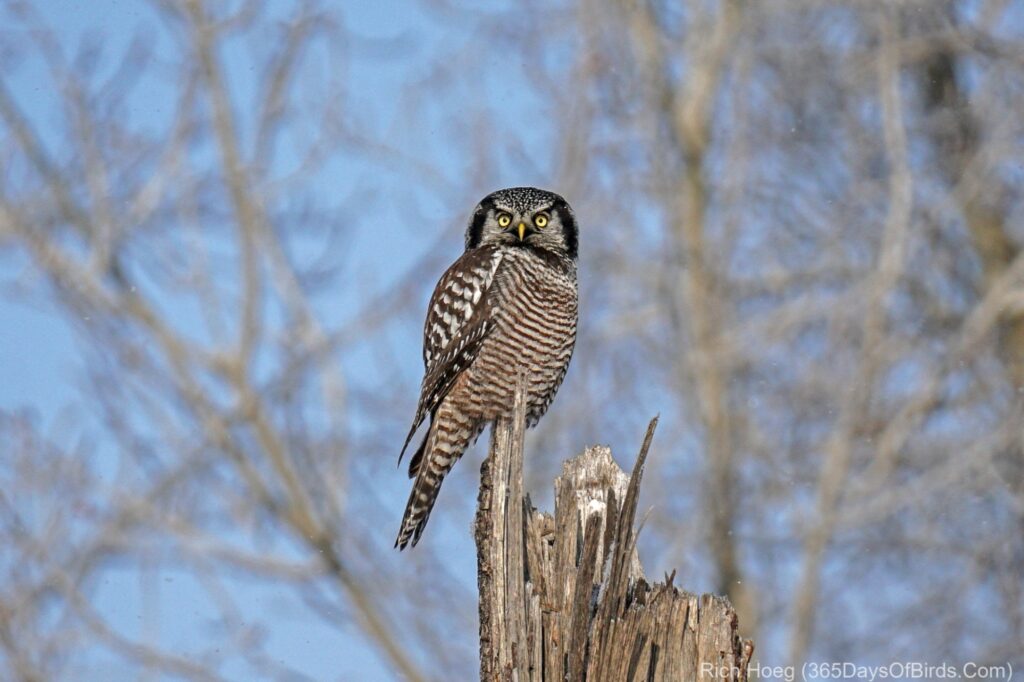Yesterday evening was perfect! How else would one describe finding a Snowy Owl just before sunset and then the following occurs:
- The landowners invites me onto their land for a closer view of the owl
- The sun comes out for the final 30 minutes of daylight
- The Snowy Owl poses on a beautiful, natural perch
Before I show the results of yesterday’s photo session, I think many readers of this blog know I support Project Snowstorm. This research effort tags Snowy Owls with solar array powered GPS tracking / communication devices. The banding devices have provided fantastic data in terms of learning more about the year round life and locations of Snowy Owls. Although these devices are up in the Arctic much of the year as Snowy Owls return north for mating and raising owlets, there has been no such comparable effort for another winter visitor, Northern Hawk Owls. Are Northern Hawk Owls only winter visitors which return north into Canada in late March or early April, or do they just retreat deep into the northern Minnesota bogland to raise families … far from any road (maybe both)?
Enter Hannah Toutonghi, a masters degree candidate at the University of Minnesota. For her research project she has been banding Northern Hawk Owls this winter with similar devices as those used by Project Snowstorm on Snowys. I am happy to be a financial supporter of her efforts. She will present a free webinar on March 17th at 6:30 pm CST about her initial research results and future efforts. The seminar is supported by the Friends of Sax-Zim Bog. Read more via their website (scroll down upon browsing over to Hannah’s webinar), and/or register here (it’s free … I’m attending)
Now back to yesterday’s Snowy Owl experience … and one photograph of a Northern Hawk Owl I watched early this winter.
Snowy Owl Just Before Sunset Yesterday


Northern Hawk Owl Photographed Earlier this Winter
Discover more from 365 Days of Birds
Subscribe to get the latest posts sent to your email.
Stunning photos! Why do the Snowy Owls have darker markings when our area has been totally white from lots of snow this year?
Snowy Owls with darker markings are either females or immature males, both of which spend much of their time on the ground up in the Arctic during the summer breeding season. The darker color and markings serve as camouflage. The females are incubating on the nests, and the young owlets are not able yet to fly.